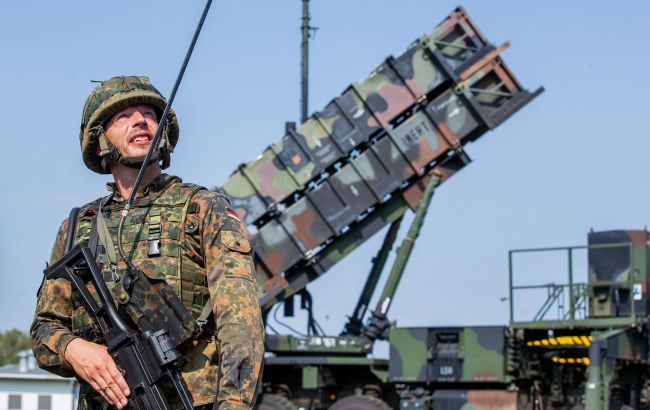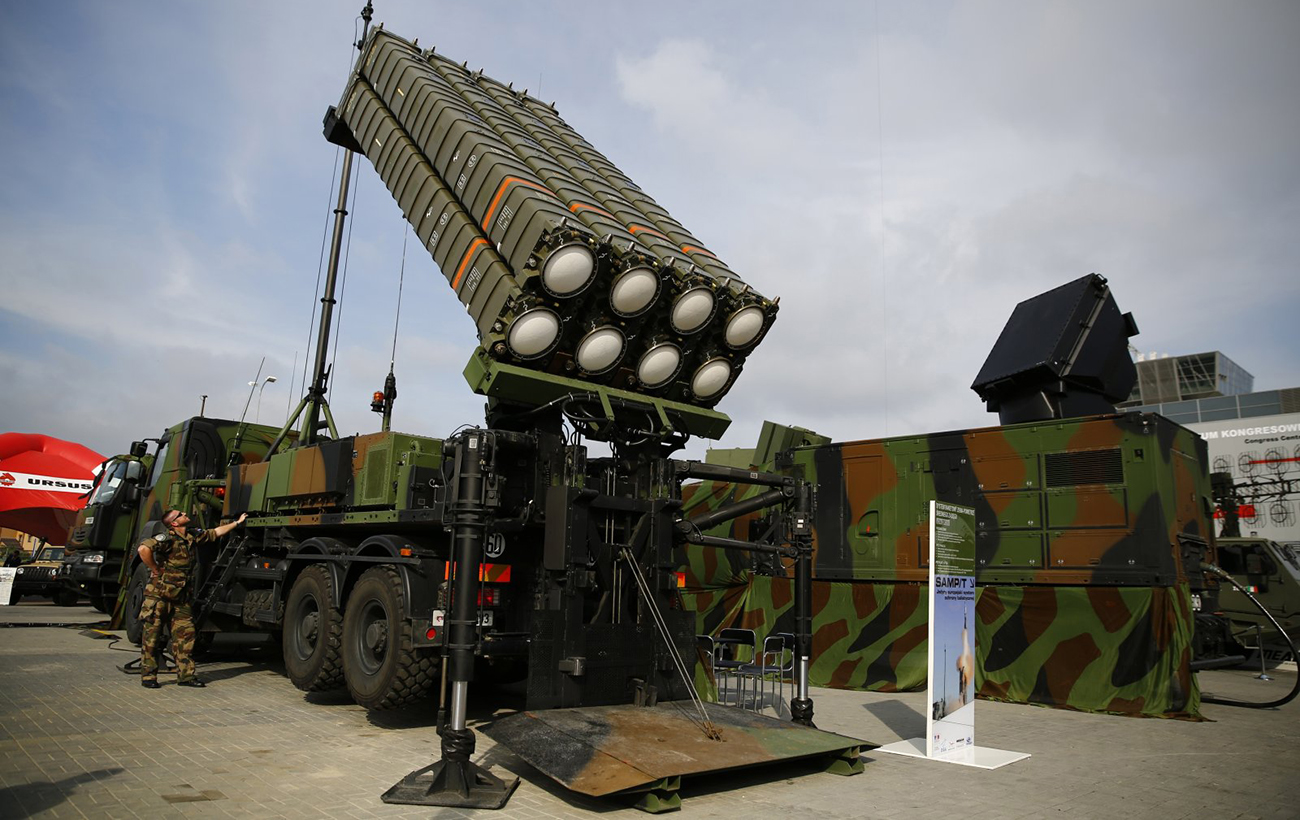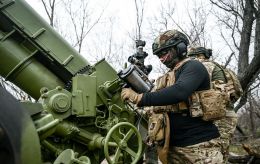Hunting for Patriots and a counteroffensive disrupted: How Russia altered missile strike targets

From the end of April, Russia has resumed large-scale shelling of Ukraine. After a failed attempt to destroy the aggressor's energy system, it seems they have stockpiled missiles for other purposes. So, what are the enemy's plans and the shattered Russian myth used to intimidate NATO?
On April 28, Russia resumed shelling Ukraine. After a 50-day pause, the enemy launched six massive strikes on relatively rear areas of the country. The capital city has been hit the hardest, enduring ten drone and missile attacks since the end of April.
The latest series of hostile shelling has lower intensity, with the Russians (at least until now) not accumulating salvos of more than 30 missiles over the course of three weeks. However, the attacks are happening more frequently. Almost every night, air raid sirens blare across Ukrainian territory, highlighting the terrorist nature of these attacks. Yet, this is likely a secondary objective.
During the fall-winter campaign, the Russians fired nearly 900 missiles, attempting to leave Ukrainians without power, water, and heat. They failed in this mission at the cost of depleting their stockpiles of precision weapons. Therefore, the prolonged pause in shelling is seemingly explained by the enemy having to replenish their missile arsenal for new tasks and targets, which no longer solely involve the energy infrastructure.
Myths shattering
The first noteworthy event took place on the night of May 4. Following the drone incident over the Kremlin, in which Moscow accused Kyiv and the US, the Russian radical public demanded "blood." Thus, the aggressor staged what appeared to be a typical drone attack on the Kyiv region the next night.
The Ukrainian Armed Forces reported that possibly ballistic weaponry was also shot down over the capital that morning, something previously deemed impossible for Ukrainian air defense systems. Two days later, the Air Force clarified that the Patriot system had intercepted not just ballistic missiles but also the hypersonic missile Kh-47M2 "Kinzhal," touted by the enemy.
Initially, Kremlin propaganda completely ignored the fact of the nighttime attack and later began claiming that "it wasn't the 'Kinzhal' at all." Later, after 12 days, the Russians repeated the shelling of Kyiv, combining different ballistic weapons for the first time. According to the General Staff, the enemy launched six "Kinzhal" missiles and ten missiles from the S-400 and "Iskander-M" complexes from the territory and airspace of Russia. All of these flights, along with several "Kalibr" missiles and "Shahed" drones, simultaneously targeted the capital and were successfully shot down, according to the Air Force.

Ukrainian Patriot system shatters the myth of invincible Russian "Kinzhal" (Photo: Air Force Command Facebook)
The destruction of six "Kinzhals" is a significant event for Ukrainian forces, the manufacturers of the Patriot air defense system, and even for the Russians themselves. The "Kinzhal" missile, along with its prototype, the "Iskander," was originally developed to counter the "umbrella" of the Patriot system in the event of war with the United States and NATO. When Putin announced the creation of the "Kinzhal" in 2018, he claimed that the missile could "overcome all existing and prospective air defense and missile defense systems." However, practical tests have shown otherwise, and it is challenging to classify it as a true hypersonic weapon.
Aviation expert and former engineer from the Antonov Design Bureau, Kostiantyn Kryvolap, explains that a hypersonic missile is one that travels along a trajectory, maneuvers on that trajectory, and hits its target at hypersonic speeds. Hypersonic speeds are those that exceed the speed of sound by five or more times, also known as Mach speeds. Initially, the "Kinzhal" is launched into the sky by its carrier, the MiG-31K.
"After launch, the missile's engine ignites, and it accelerates, but there are conflicting reports regarding its speed. Russia claims it reaches speeds of up to 10 Mach, but this is highly doubted. Russian enthusiasts on forums suggest it reaches a maximum of 5 to 5-something Mach. At this stage, it has no GPS or GLONASS," says the expert.
However, the missile does not maintain such speeds throughout its entire flight. It needs to decelerate to join the navigation and targeting process. Achieving accurate navigation and targeting at such high speeds is extremely challenging, thus casting doubt on "Kinzhal's" precision, clarifies Kryvolap. When the missile descends towards the ground on a ballistic trajectory, its speed ranges from 1.5 to 2.5 Mach, depending on various estimates.
"In other words, it is no longer hypersonic. For the Patriot system, it is not even considered fast; its anti-missile interceptors are faster," the expert adds.
According to various reports, Russia has six operational MiG-31s capable of carrying the "Kinzhal" missiles, according to Kryvolap. Considering that one MiG can carry only one missile, this allows an estimate of the maximum salvo an adversary could launch in a single attack.
Russian fables
In reality, the "hypersonic Kinjal" is the result of either colossal Russian corruption, incompetence, or a combination of both. Furthermore, it seems that Russia is set to continue its "no-analog" category of hypersonic weapons with the upcoming "Zircon" missile, designed to counter NATO missile defense systems and likely to face similar problems.
Presumably, to save face and protect their reputation, the Russian Ministry of Defense decided to present the results of the "Kinярal" attack on Kyiv in their own favorable light. According to their version, the missiles allegedly managed to destroy five Patriot launchers and the crucial radar system. The Patriot system, comprising a radar, command center, several supporting vehicles, and up to eight launchers, can be dispersed over several kilometers, making it impossible to eliminate the entire system in a single strike.
Furthermore, as a result of the same shelling, according to the interpretation of the Russian Ministry of Defense, they allegedly managed to destroy the entire Western equipment. It is worth noting that official Russian propaganda has previously been marked by fantastic "achievements," such as the destruction of Storm Shadow missiles, HIMARS, and Abrams tanks, although the latter is not even present in the Ukrainian army.
Foreign media, including CNN and AFP citing American sources, reported that the complex indeed could have suffered damage, but despite this, it remains operational. American officials, as CNN indicated, do not believe that the system was directly hit by a Russian "Kinzhal" missile or any other munition. Informed sources of the RBC-Ukraine in military circles affirm that the complex did not suffer "any critical damage that would require it to be sent for repair."
Yesterday, the Pentagon confirmed the information about the damage and reported that the system had already been repaired. According to Yurii Ihnat, a spokesperson of the Air Forces Command of the Armed Forces of Ukraine, the Patriot was in operational condition and on active duty during the night shelling that took place from May 17 to 18.
 The consequences of the missile attack from May 17 to 18 (photo: Facebook, Kyiv Regional Police)
The consequences of the missile attack from May 17 to 18 (photo: Facebook, Kyiv Regional Police)
According to one version, fragments of a destroyed missile could have hit the Patriot component. If the enemy's target was hit, damaging its body or engine but not its warhead during the interception, it is quite likely that the missile could have fallen nearby and detonated. Another possible theory is that if the missile was shot down at a very low altitude, its fragments could have hit one of the Patriot's elements or launchers.
If we combine the two "Kinzhal" attacks on the capital into one picture, this version of events and the Russian objectives emerge. Perhaps during the May 4 attack, the Russians did not yet know that the Kyiv region was protected by the Patriot or did not accurately assess its combat capabilities. Therefore, the launch of one "Kinzhal" could have been purely a demonstration attempt at "revenge" for the drone over the Kremlin. According to the General Staff, this incident was the work of the Russians themselves.
"They are trying to show the necessity of war and the need to defend against Ukraine and the entire Western world. They lost this information operation—they failed to achieve the results they expected. However, since it has already happened and to avoid further reputational losses, the Russians supposedly had to retaliate. In doing so, they were supposed to destroy something significant," said Andrii Cherniak, a representative of the Defense Intelligence of the Ministry of Defense of Ukraine.
He added that since they failed to destroy anything, the Russians are doing everything possible to prove that they still manage to "avenge" and destroy the Patriot system. It can be assumed that during the second attack from May 15 to 16, the enemy's target was indeed the Patriot complex. This version is supported by the "mix" that was released either to breach the defense and destroy the system or at least assess its effectiveness. But everything turned out to be not in favor of the Russians.
Russia's new targets
It is quite likely that the enemy will not stop at attempts to disable the Patriot. Probably, a similar hunt will begin for another modern system, the SAMP/T, which has similar characteristics and anti-missile capabilities. However, these targets and tasks of the aggressor are not limited to this.
"Previously, they failed to disable our energy system, and now they have completely different priorities: to disrupt our plans and preparations for active actions during the spring-summer campaign," said Vadym Skibitskyi, Deputy Chief of the Defense Intelligence.
The Russians are currently using missile weaponry not only to target air defense systems but also our command centers, supply routes, ammunition and equipment depots, fuel storage facilities, as well as troop concentration areas. Additionally, as Chernyak pointed out, the enemy also aims to force us to withdraw our air defense systems from the front lines by striking the rear areas. According to Kryvolap, this may currently be one of the main objectives of the aggressor - to allow their aviation to operate more freely directly on the front lines. SAMP/T complex, presumably, has already arrived in Ukraine (photo: mil.in.ua)
SAMP/T complex, presumably, has already arrived in Ukraine (photo: mil.in.ua)
"It is evident that this is what they are aiming for by shelling, for example, Kyiv. We lack air defense systems not only for the front lines but also for the rest of Ukraine. According to various estimates, a country like ours needs 10-20 Patriot-type systems," suggested the expert.
The Russians have indeed depleted a significant stockpile of missile weaponry. However, they have managed to restore production, says Skibitsky. He clarified that the fragments of the missiles used by the aggressor indicate that they have just come off the assembly line. These munitions were manufactured in the first quarter of 2023.
"They import 'Kalibr' missiles to the occupied Crimea at least twice a month. Currently, the Russians are capable of producing approximately 25 'Kalibr' missiles per month, 35 units of Kh-101, two 'Kinzhals,' and five 9M723 ballistic missiles for 'Iskander-M.' Thus, they are able to import components for missile production despite international sanctions," explained the Deputy Chief of Defense Intelligence.
In intelligence circles, it is believed that Russia's missile campaign will continue as long as they have the resources. It is likely that they will employ a combination of means and resort to new experiments. Therefore, our immediate goal is to continue strengthening our air defense systems at the same pace. It appears that there is already a Western consensus on this matter.

